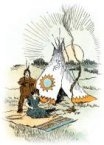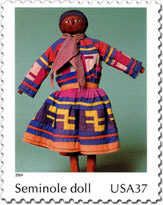
Worksheets and No Prep Teaching Resources
Reading Comprehension Worksheets
Native Americans

Native Americans
 Worksheets and No Prep Teaching Resources Reading Comprehension Worksheets Native Americans |
 Native Americans |
| edHelper's suggested reading level: | grades 4 to 6 | |
| Flesch-Kincaid grade level: | 6.32 |
|
Native American Dolls
By Colleen Messina |

|
 1 Every culture has different kinds of dolls. Native Americans didn't have Barbies, but they did have beautiful dolls. Dolls from each tribe looked quite different, but they were all well-loved by everyone in the tribe. These amazing creations out of bark, corn husks, and leather also helped preserve Indian culture.
1 Every culture has different kinds of dolls. Native Americans didn't have Barbies, but they did have beautiful dolls. Dolls from each tribe looked quite different, but they were all well-loved by everyone in the tribe. These amazing creations out of bark, corn husks, and leather also helped preserve Indian culture. |
Create Weekly Reading Books
Prepare for an entire week at once! |
| Leave your feedback on Native American Dolls (use this link if you found an error in the story) |
 |
Native Americans
|
 |
Art Theme Unit: Reading Comprehensions
|
 |
United States
|
|
|
 | Fifty States Theme Unit |
 |
Document Based Activities |